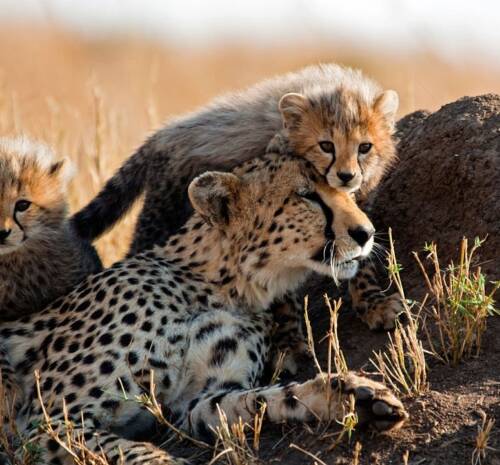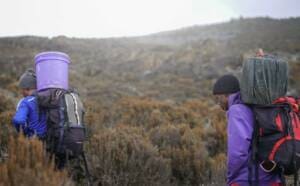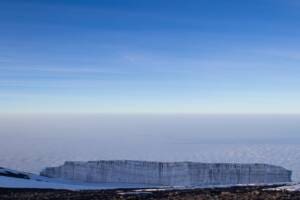Introduction
KENYA WILDLIFE SAFARI
Kenya, located in the heart of East Africa, is renowned for its rich and diverse wildlife, making it a top destination for Kenya wildlife safari. From breathtaking national parks to unique ecosystems, Kenya offers a captivating experience for nature enthusiasts and adventure seekers alike. In this comprehensive guide, we will explore the highlights of Kenya’s wildlife safaris, including the best destinations, activities, accommodations, and conservation efforts.
Planning a Kenya Wildlife Safari
When planning a Kenya wildlife safari, it is crucial to consider various factors to ensure a remarkable experience. Here are some key aspects to keep in mind:
Choosing the right time to visit
Understanding the seasonal patterns and wildlife behavior
Optimal time for witnessing the Great Migration and other wildlife spectacles
Balancing weather conditions and tourist crowds
Kenya wildlife safari is vibrant throughout the year, but certain periods offer extraordinary sightings. For instance, the months of July to October witness the Great Migration in Maasai Mara National Reserve, where millions of wildebeest and other animals navigate treacherous river crossings. Each season has its unique highlights, so research is essential to plan your safari accordingly.
Selecting the ideal duration and budget
Determining the duration of your safari based on interests and availability
Considering accommodation costs, park fees, and transportation expenses
Opting for guided safaris or self-drive options depending on comfort and expertise
The duration of your Kenya wildlife safari will depend on the level of immersion and exploration you desire. Kenya offers a myriad of wildlife-related activities, from game drives to walking safaris, so allocate enough time to savor the magic of each destination. Additionally, considering your budget is crucial. Accommodation costs, park fees, and transportation expenses should all be factored in. Guided safaris can offer a more comprehensive experience with experienced wildlife experts, while self-drive options provide flexibility and freedom to explore at your own pace.
Required travel documents and safety precautions
Valid passports and visa requirements
Health precautions and recommended vaccinations
Respect for wildlife and adherence to park regulations
Before embarking on your Kenya wildlife safari, ensure that you have all the necessary travel documents. A valid passport with a minimum of six months remaining is essential, and some nationalities may require a visa for entry into Kenya. Additionally, it is crucial to take health precautions and receive recommended vaccinations to protect against common travel-related illnesses. Respecting wildlife and adhering to park regulations are paramount to ensure the preservation of Kenya natural treasures and to guarantee the safety of both visitors and wildlife.
Top Wildlife Destinations in Kenya
Kenya is home to exceptional national parks, each offering a unique wildlife experience. Here are some of the must-visit destinations:
Maasai Mara National Reserve
Immersive wildlife experiences in Maasai Mara
Thrilling encounters with the “Big Five” and diverse wildlife species
Experiencing the raw power and grace of predators in action
Rare sightings of endangered species and elusive creatures
Maasai Mara National Reserve is a wildlife enthusiast’s paradise, renowned for its diverse fauna and dramatic landscapes. This iconic reserve boasts an abundance of wildlife, including the “Big Five” – lions, elephants, leopards, buffalos, and rhinos. Embark on game drives through the vast savannah, where you can witness the raw power and grace of predators in action. Maasai Mara is also home to endangered species like cheetahs and wild dogs, providing rare sighting opportunities for nature lovers.
The Great Migration: Witnessing one of nature’s wonders
Over two million wildebeest and zebras in search of greener pastures
The dramatic river crossings and the fight for survival
Seasonal variations and the impact on predators and herbivores
One of the most extraordinary sights on the African continent is the Great Migration in Maasai Mara. Witnessing over two million wildebeest and zebras embark on a treacherous journey in search of fresh grazing lands is a humbling experience. From July to October, the Mara River becomes the stage for dramatic river crossings, where the herbivores face the constant threat of predators lurking in the depths. The Great Migration shapes the ecosystem and presents an unparalleled opportunity to observe the complex dynamics of survival and the delicate balance between predators and herbivores.
Wildlife conservation efforts in Maasai Mara
Partnerships between local communities, conservation organizations, and tourism industry
Anti-poaching initiatives and wildlife monitoring programs
Sustainable tourism practices and community development projects
Maasai Mara National Reserve stands as a testament to the successful conservation efforts in Kenya. Through partnerships between local communities, conservation organizations, and the tourism industry, bold strides have been taken to protect the biodiversity of the reserve. Anti-poaching initiatives, such as the use of technology and community engagement, have reduced illegal hunting activities. Wildlife monitoring programs provide valuable data for conservation efforts, enabling informed decision-making. Furthermore, sustainable tourism practices and community development projects have empowered local communities while preserving the natural habitat.
Amboseli National Park
Marveling at Africa highest free-standing mountain
Enchanting views of Mount Kilimanjaro
Captivating landscapes and ethereal sunsets
Unique photographic opportunities against the backdrop of the mountain
Amboseli National Park, nestled at the foot of Mount Kilimanjaro, offers a captivating showcase of wildlife and breathtaking sceneries. The park’s proximity to Africa’s highest free-standing mountain provides an enchanting backdrop to every adventure. The imposing presence of Mount Kilimanjaro, often shrouded in clouds, adds an ethereal touch to the landscape. The interplay of light and shadow during sunrise and sunset creates unique photographic opportunities, making Amboseli a dream destination for aspiring photographers.
Exploring Amboseli unique ecosystem and wildlife
Abundance of elephants and close-up encounters with gentle giants
Varied habitats supporting diverse bird species and smaller wildlife
Fascinating insights into elephant behavior and social dynamics
Amboseli unique ecosystem is teeming with wildlife, but it is undoubtedly the elephants that steal the spotlight. Large herds of elephants roam freely, presenting incredible opportunities for close encounters with these majestic creatures. Observing their social interactions and witnessing their playful behaviors is a truly awe-inspiring experience. Amboseli is also home to a variety of bird species, making it a haven for birdwatchers. The park’s diverse habitats, including grasslands, swamps, and acacia woodlands, support a plethora of smaller wildlife, completing the immersive safari experience.
Interacting with the Maasai people and their culture
Guided cultural tours to Maasai villages
Immersion in traditional ceremonies and rituals
Opportunity to support local communities through ethical tourism
Amboseli National Park offers not only remarkable wildlife encounters but also the chance to interact with the indigenous Maasai people. Guided cultural tours to Maasai villages allow visitors to gain insights into their rich traditions, customs, and way of life. From witnessing vibrant traditional ceremonies to learning ancient survival skills, these experiences provide a deeper understanding of Maasai culture and foster cultural exchange. By participating in these activities, visitors can directly contribute to the socio-economic development of the Maasai community and support their sustainable livelihoods.
Tsavo Conservation Area
Discovering the vastness of Tsavo East and West National Parks
Exploring the largest protected wildlife area in Kenya
Scenic landscapes and contrasting habitats
Abundance of wildlife species, including the “red elephants”
Tsavo Conservation Area, encompassing Tsavo East and West National Parks, is a haven of wilderness and enchantment. Spanning over 20,000 square miles, it is the largest protected wildlife area in Kenya. The area’s dramatic landscapes, ranging from rugged mountains and volcanic plains to lava fields and ancient sand dunes, create a visual feast for the senses. Tsavo is also renowned for its iconic “red elephants” – elephants dusted with red soil, giving them a distinct appearance. A safari in Tsavo promises thrilling encounters with a variety of animal species against the backdrop of breathtaking scenery.
Legendary railway tales and historical landmarks
Exploring the historical significance of the Lunatic Express railway
Visiting iconic landmarks, such as the Tsavo Railway Bridge
Understanding the railway’s impact on wildlife conservation
The Tsavo Conservation Area is not only a sanctuary for wildlife but also a testament to Kenya’s rich history. The Lunatic Express railway, connecting Mombasa to Nairobi, leaves its mark on the landscape. Exploring the historical significance of this railway, with tales of daring adventure and monumental challenges, adds an intriguing layer to your safari experience. Visiting iconic landmarks, such as the Tsavo Railway Bridge, immerses you in the legends of the past. Understanding the railway’s impact on wildlife conservation showcases the delicate balance between human development and preserving natural habitats.
Wildlife encounters beyond imagination
The Big Five and an array of other magnificent species
Rare and elusive creatures, such as the lesser kudu and Grevy’s zebra
Opportunities for night game drives and witnessing nocturnal wildlife
The Tsavo Conservation Area is a treasure trove of wildlife encounters that extend beyond imagination. The “Big Five” – lions, elephants, buffalos, rhinos, and leopards – roam freely in this vast expanse of protected land. Tsavo is also home to a myriad of other magnificent species, including giraffes, zebras, hippos, and crocodiles. For those seeking rare and elusive creatures, the area boasts the lesser kudu, gerenuk, and Grevy’s zebra. Night game drives provide a unique opportunity to witness the magic of nocturnal wildlife, as the African savannah transforms into a different world under the moonlight.
Samburu National Reserve
Unique flora and fauna of Samburu
Scenic landscapes with dramatic mountain backdrops
Rare species and endemic wildlife adaptations to the arid environment
Captivating encounters with the “Samburu Special Five”
Samburu National Reserve is a hidden gem within Kenya’s wildlife safari circuit. Its unique geographical location, situated in the arid northern region, gives rise to stunning landscapes with dramatic mountain backdrops and rugged terrain. The reserve’s arid environment is home to several rare and endemic species, such as the reticulated giraffe, Grevy’s zebra, and Beisa oryx, showcasing their remarkable adaptations to survive in this harsh climate. Another highlight of Samburu National Reserve is the “Samburu Special Five”: the Beisa oryx, Grevy’s zebra, Somali ostrich, gerenuk, and reticulated giraffe.
Cultural encounters with Samburu tribe
Insightful visits to Samburu villages and engaging with the community
Ancient traditions and striking beadwork
Learning about the Samburu people’s conservation efforts
Immersing yourself in the vibrant culture of the Samburu people is an enriching experience that adds a unique dimension to your wildlife safari. The Samburu tribe is known for their colorful attire and intricate beadwork, each design holding deep cultural significance. Engage in village visits, where you can witness age-old traditions, energetic dances, and authentic Samburu hospitality. By learning about the Samburu people’s conservation efforts and the challenges they face in protecting their wildlife and land, you contribute to the preservation of this remarkable community and support their sustainable practices.
Iconic elephants and other extraordinary wildlife
Abundance of elephants, known for their unique reddish appearance
Majestic leopards and elusive lions of Samburu
Birdwatching opportunities and sightings of rare and endemic species
Samburu National Reserve showcases an impressive array of wildlife, with elephants taking center stage. The elephants of Samburu are known for their unique reddish appearance, which is a result of dusting themselves with the fine red soil of the region. Beholding these majestic creatures in their natural habitat is a truly unforgettable experience. Samburu is also home to elusive predators like leopards and lions, which gracefully navigate the dense thickets and granite outcrops. Birdwatchers will delight in the rich avian diversity, with opportunities to spot rare and endemic species like the vividly colored vulturine guineafowl and the somber banded parisoma.
Lake Nakuru National Park
The pink spectacle of Lake Nakuru
Witnessing the mesmerizing flocks of flamingos
Seasonal variations and environmental factors influencing flamingo populations
Importance of Lake Nakuru as a designated Ramsar site
Lake Nakuru National Park is renowned for its awe-inspiring pink spectacle created by millions of flamingos that flock to its shores. Watching these graceful birds form a vibrant carpet of pink against the backdrop of the lake is a sight to behold. However, it is important to note that flamingo populations can vary due to environmental factors such as water levels and algae availability. Lake Nakuru has been recognized as a Wetland of International Importance under the Ramsar Convention, highlighting its significance as a crucial habitat for numerous bird species.
Birdwatcher paradise: Flamingos and other avian species
Abundance of bird species, including both resident and migratory birds
Excellent birdwatching opportunities throughout the park
Endemic species and rare sightings for avid bird enthusiasts
Beyond the mesmerizing flamingo flocks, Lake Nakuru National Park offers a wealth of birdwatching opportunities. The park’s diverse habitats, including the lake itself, surrounding woodlands, and acacia forests, attract a remarkable variety of bird species. Both resident and migratory birds can be observed throughout the year, making Lake Nakuru a birdwatcher’s paradise. From the iconic African fish eagle to the elusive African harrier hawk, avian enthusiasts will be captivated by the presence of endemic species and rare sightings that grace the skies and treetops of this extraordinary national park.
Rare rhinos and other wildlife conservation efforts
The successful reintroduction of black and white rhinos
Conservation projects protecting endangered species and habitats
The importance of community engagement in wildlife conservation
Lake Nakuru National Park boasts an incredible success story in wildlife conservation, particularly in safeguarding the endangered rhinoceros species. Through intensive conservation efforts, both black and white rhinos have been successfully reintroduced to the park, offering visitors a rare opportunity to witness these magnificent creatures up close. Lake Nakuru is also involved in various initiatives aimed at preserving endangered species and their habitats, showcasing the dedication of the park authorities and conservation organizations in protecting Kenya’s rich biodiversity. Community engagement plays a pivotal role in these efforts, highlighting the importance of educating and involving local communities in wildlife conservation.

Kenya Wildlife Safari Activities
Embarking on a Kenya wildlife safari offers a multitude of activities to enhance your experience. Here are some of the most popular:
Game Drives
Embarking on thrilling game drives
Game drives in open vehicles allow you to traverse the national parks, gaining a close-up perspective of wildlife. Professional guides accompany you, sharing their expertise and ensuring you don’t miss any extraordinary sightings.
Professional guides and their role in wildlife spotting
Experienced guides possess extensive knowledge of the wildlife’s behavior and movement patterns, increasing your chances of encountering rare and elusive species. They play a crucial role in making your safari an educational and unforgettable experience.
Best practices for responsible wildlife viewing
Responsible wildlife viewing is essential for the preservation of ecosystems and the well-being of animals. Adhering to guidelines such as maintaining a respectful distance and avoiding any actions that may disturb the wildlife is crucial to promote sustainable tourism.
Walking Safaris
Experiencing the wilderness up close and personal
Walking safari offer a unique opportunity to explore the intricate details of the bush and encounter wildlife on foot. Guided by armed rangers and expert trackers, you can immerse yourself in nature, experiencing its sights, sounds, and scents firsthand.
Tracking wildlife on foot: Safety measures and etiquette
While walking safaris provide a more intimate experience, it is essential to follow safety measures to protect both visitors and wildlife. Respecting animals’ space, staying quiet, and listening to your guide’s instructions ensure a safe and respectful encounter.
Hot Air Balloon Safaris
Soaring over the savannah: A magical experience
Hot air balloon safaris offer a unique perspective, allowing you to glide above the vast savannah and witness iconic wildlife from a bird’s-eye view. The tranquility and breathtaking vistas create an unforgettable adventure.
Sunrise vistas and aerial wildlife photography
As you ascend during a hot air balloon safari, witness the golden rays of the sunrise illuminating the landscape. Capture stunning aerial photographs of wildlife in their natural habitat, creating memories to cherish for a lifetime.
Cultural Interaction
Immersing in local communities and traditions
Kenya wildlife safari offer opportunities to engage with indigenous tribes and learn about their customs and sustainable practices. Immerse yourself in their way of life, gaining a deeper understanding of the harmonious relationship between locals and wildlife.
Learning about indigenous tribes and their sustainable practices
Indigenous tribes such as the Maasai and Samburu have unique knowledge of the land and wildlife. By interacting with them, you can gain insights into their sustainable practices, fostering a sense of appreciation and support for their way of life.
Supporting local economies through responsible tourism
Engaging with local communities, purchasing traditional crafts, and supporting local businesses contribute to the economic growth and well-being of these communities. Responsible tourism helps preserve cultural heritage and ensures its sustainability for future generations.
Kenya wildlife safari Accommodation Options
During your Kenya wildlife safari, you’ll have a range of accommodation options to suit your preferences:
Luxury Lodges and Tented Camps
Unparalleled comfort amidst the wild
Luxury lodges and tented camps provide a luxurious retreat after a day of wildlife exploration. These establishments offer exceptional amenities and services that allow you to experience the untamed beauty of Kenya without compromising on comfort.
Outstanding amenities and personalized services
Luxury lodges and tented camps provide a myriad of amenities, including gourmet dining, spa facilities, and personalized services. Indulge in the finest hospitality while being surrounded by nature’s wonders.
Budget-friendly Campsites
Embracing simplicity and nature
For those seeking a more rustic experience, budget-friendly campsites offer an opportunity to fully immerse in the wilderness. Embrace simplicity, sleep under the stars, and listen to the nocturnal sounds of the African bush.
Essential facilities and communal experiences
Budget campsites provide essential facilities such as shared bathrooms and communal dining areas. Interact with fellow travelers, swapping stories and sharing the awe-inspiring experiences of your wildlife safari.
Exclusive Eco-Lodges
Experiencing sustainable tourism in harmony with nature
Exclusive eco-lodges prioritize sustainable practices, ensuring minimal impact on the environment. These eco-friendly accommodations allow you to experience the splendors of nature while actively contributing to its preservation.
Unique eco-friendly initiatives and practices
Eco-lodges implement various initiatives, including renewable energy sources, water conservation, and local community involvement. By choosing to stay in eco-lodges, you are supporting responsible and sustainable tourism.
Wildlife Photography Tips
Capturing the beauty of Kenya’s wildlife requires skill and preparation. Consider the following tips to enhance your wildlife photography experience:
Essential equipment for capturing stunning wildlife shots
Invest in a robust DSLR or mirrorless camera with a telephoto lens to capture wildlife in intricate detail. Other essential equipment includes extra batteries, memory cards, and a sturdy tripod for stability during wildlife photography.
Composition techniques and settings for different scenarios
Experiment with different composition techniques such as the rule of thirds and leading lines to create visually pleasing images. Adjusting settings like aperture, shutter speed, and ISO according to lighting conditions and animal behavior is crucial for exceptional wildlife shots.
Respecting wildlife and ethical considerations
Responsible wildlife photography respects animals’ well-being and natural behavior. Maintain a safe distance, refrain from causing distress or disruption, and avoid altering an animal’s environment for the sake of a photograph. Practice ethical photography to protect the subjects you are capturing.
Conservation Efforts in Kenya
Kenya has a strong commitment to wildlife conservation, evident through various organizations and initiatives. Here are some key points about conservation in Kenya:
Overview of wildlife conservation organizations
Multiple organizations, both governmental and non-governmental, work tirelessly towards preserving Kenya’s wildlife and habitats. Examples include the Kenya Wildlife Service (KWS), African Wildlife Foundation (AWF), and local community-led initiatives.
Success stories and ongoing challenges
Conservation efforts in Kenya have yielded positive outcomes, such as the recovery of endangered species and increased protected areas. However, challenges such as poaching, habitat loss, and human-wildlife conflicts persist. Continuous efforts are needed to ensure long-term success.
How Visitors Can Contribute to Conservation Efforts
Visitors can actively contribute to wildlife conservation in Kenya by choosing responsible tour operators who prioritize sustainability and by visiting conservancies that directly support conservation initiatives. Additionally, learning about the local environment, respecting regulations, and supporting conservation-focused projects make a positive impact.
Wildlife Safari Cuisine
Embarking on a Kenya wildlife safari not only offers unparalleled opportunities for wildlife encounters but also treats your taste buds to unique and delicious culinary experiences.
Savoring Traditional Kenyan Dishes During Safaris
Discover the rich and diverse flavors of Kenyan cuisine, blending indigenous ingredients with influences from various cultural traditions. From hearty stews like ‘nyama choma’ (grilled meat) to ‘ugali’ (a staple made from maize flour), each dish tells a story that reflects the country’s history and heritage.
Unique Dining Experiences in the Wilderness
Savoring a meal under the vast African sky, surrounded by the sounds of nature, creates an unforgettable dining experience. Whether it’s a bush dinner with candlelight or a picnic in the heart of the savannah, these unique dining experiences truly immerse you in the safari ambiance.
Sustainable Food Practices
Sustainable food practices often underpin dining experiences in Kenyan wildlife reserves. Resorts and lodges prioritize locally sourced ingredients, reducing food miles, supporting local communities, and minimizing their ecological footprint. By choosing these options, you participate in a culinary journey that aligns with conservation principles.
Transportation in Kenya
Exploring the diverse landscapes of Kenya necessitates understanding the various transportation options available within the country.
Exploring Different Modes of Transportation Within Kenya
Kenya offers a range of transportation modes, each presenting unique advantages and experiences. Domestic flights provide quick access to remote areas, road trips allow for greater flexibility and scenic views, and railway journeys showcase Kenya’s historical connections.
Domestic Flights
For travelers looking to cover long distances quickly, domestic flights are a popular choice. Kenya boasts a network of domestic airports and airstrips, making it possible to reach even the most remote destinations with ease. Several airlines operate daily flights between major cities like Nairobi, Mombasa, Kisumu, and Eldoret. This mode of transportation not only saves time but also offers breathtaking aerial views of Kenya’s stunning landscapes, including its iconic wildlife reserves.
Road Trips
Embarking on a road trip in Kenya is an adventure like no other. The country features a network of well-maintained roads that connect major cities and towns. Travelers can opt to rent a vehicle and explore at their own pace, enjoying the freedom to stop and admire the scenic beauty along the way. However, it’s essential to familiarize yourself with local driving regulations and road conditions, especially if you plan to venture into more remote areas.
Matatus and Public Buses
Matatus are the primary mode of public transportation in Kenya. These minivans are known for their colorful exteriors and often vibrant interiors. While they offer an affordable way to travel within cities and towns, they can be crowded and may not always adhere to strict schedules. For longer journeys between cities, travelers can opt for public buses that provide a budget-friendly way to explore Kenya’s diverse regions.
Taxis and Ride-Sharing Services
Taxis are readily available in Kenyan cities, providing a convenient means of transportation within urban areas. Nairobi, for instance, has a well-established taxi network. In recent years, ride-sharing services like Uber have also gained popularity, offering travelers a reliable and often more cost-effective alternative to traditional taxis.
Railway Journeys
Kenya’s railway system offers a unique and nostalgic way to explore the country. The historic Lunatic Express, now known as the Kenya-Uganda Railway, connects Nairobi to Mombasa, passing through scenic landscapes and iconic locations. The Madaraka Express, a modern train service, offers a faster and more comfortable option for traveling between these two major cities.
Motorcycle Taxis (Boda Bodas)
In smaller towns and rural areas, motorcycle taxis, known as boda bodas, are a common mode of transportation. They are an efficient way to navigate through narrow paths and reach destinations that may be inaccessible by larger vehicles. However, safety precautions should be taken, such as wearing helmets and negotiating fares before the ride.
Ferries
For travelers looking to explore Kenya’s coastal areas and islands, ferries are a vital mode of transportation. They connect the mainland to popular destinations like Lamu, Zanzibar, and Mombasa. Ferries provide an opportunity to enjoy picturesque sea views and experience the maritime culture of Kenya.
Packing essentials for Kenya wildlife safari
Packing for a Kenya wildlife safari requires careful consideration to ensure you have all the essentials for a comfortable and enjoyable adventure. The following is a comprehensive list of items to pack for your safari:
Clothing
- Lightweight, breathable, and neutral-colored clothing (avoid bright colors that may attract insects or scare wildlife)
- Long-sleeved shirts and pants to protect against sun and insects
- Fleece or jacket for cooler evenings and early mornings
- Comfortable, closed-toe walking shoes or hiking boots
- Sandals or flip-flops for relaxing at the lodge or camp
- Hat or cap with a wide brim for sun protection
- Swimsuit (for lodges with swimming pools)
- Pajamas or sleepwear
- Socks and underwear
- Bandanas or scarves for dust protection
Safari Gear for Kenya wildlife safari
- Binoculars for wildlife and bird watching
- Camera or camcorder with extra batteries and memory cards
- Waterproof and dustproof camera bag or case
- Safari-appropriate backpack or daypack
- Headlamp or flashlight with extra batteries
- Sunglasses with UV protection
- Personal water bottle or hydration system
- Ziplock bags for organizing and protecting electronics
- Field guidebook for identifying wildlife and birds
- Notebook and pen for journaling or sketching
- Multi-purpose tool or Swiss Army knife
Personal Items:
- Passport and visa (if required)
- Travel insurance documents and contact information
- Prescription medications in original containers
- Over-the-counter medications (pain relievers, antihistamines, diarrhea medicine, etc.)
- Personal toiletries (toothbrush, toothpaste, soap, shampoo, etc.)
- Sunscreen with a high SPF rating
- Insect repellent with DEET or other effective ingredients
- Personal identification (driver’s license or ID)
- Travel pillow for added comfort during long drives
- Earplugs and eye mask for better sleep
- Power bank for charging devices on the go
- Travel adapter for Kenyan power outlets (Type G)
- Personal first aid kit (bandages, antiseptic wipes, etc.)
Luggage and Packing Aids:
- Durable, soft-sided luggage or duffel bag (hard-sided suitcases are less convenient)
- Packing cubes or compression bags to organize clothing
- Locks or cable ties for securing luggage
- Lightweight, foldable daypack for excursions
- Laundry bag for separating dirty clothes
Important Documents:
- Printed copies of your itinerary, accommodation reservations, and travel insurance details
- Emergency contact information for your embassy or consulate in Kenya
- Photocopies of your passport and visa (keep separate from the originals)
- Wallet or money belt to secure valuables
Miscellaneous Items:
- Cash (small denominations) for tips and incidentals
- Credit/debit cards (notify your bank of your travel plans)
- Guidebooks and maps of Kenya
- Reusable shopping bags for souvenirs
- Snacks for long drives or game drives
- Reusable water-resistant poncho or rain jacket (especially during the rainy season)
- Travel umbrella (compact and portable)
- Power strip or adapter with multiple outlets (useful for charging multiple devices)
Remember that packing light is key for safaris, as space in safari vehicles may be limited. Consult with your tour operator or lodge for any specific recommendations or requirements based on the time of year and the type of safari you’re undertaking. Additionally, check the luggage weight restrictions for any internal flights or transfers within Kenya to ensure you comply with their policies.
Health and Safety Precautions for Kenya Wildlife Safari
Vaccinations: Ensure required vaccinations (e.g., yellow fever) and consider malaria prophylaxis.
Insect Protection: Use insect repellent, wear long clothing, and use mosquito nets.
Sun Protection: Apply sunscreen, wear sunglasses, and a wide-brimmed hat for sun safety.
Hydration: Stay hydrated with bottled or purified water to prevent dehydration.
First Aid: Carry a basic first aid kit and any necessary medications.
Wildlife Caution: Maintain a safe distance from animals; follow guides’ safety instructions.
Food Safety: Consume cooked and safe foods to prevent foodborne illnesses.
Travel Insurance: Secure comprehensive travel insurance covering health emergencies.
Security Awareness: Stay informed about local conditions and follow safety guidelines.
Emergency Contacts: Keep emergency contact information and embassy details handy.
FAQ for Kenya wildlife safari
What is the best time to witness the Great Migration in Maasai Mara?
The best time to witness the Great Migration in the Maasai Mara is typically between July and October. During this period, millions of wildebeest, zebras, and other herbivores cross the Mara River in search of greener pastures, creating one of the most spectacular wildlife events on Earth. This migration timing is influenced by rainfall patterns and can vary slightly from year to year, so it’s advisable to check with local tour operators or wildlife experts for the most current information when planning your visit.
Are Kenya national parks safe for tourists?
Yes, Kenya’s national parks are generally safe for tourists. Follow park rules, stay with guides, exercise wildlife caution, and be mindful of health and security. Carry emergency contacts and travel insurance for added safety.
Can I visit indigenous tribes during a wildlife safari?
Yes, many wildlife safaris in Kenya offer opportunities to visit indigenous tribes. These cultural interactions can provide valuable insights into the traditional lifestyles, customs, and practices of local communities. However, it’s essential to approach such visits with respect and sensitivity. Always follow the guidance of your safari operator or guide to ensure that your interactions with indigenous tribes are responsible and respectful of their culture and privacy.
What is the most sustainable way to support local communities?
Support local communities sustainably by buying local, respecting culture, choosing responsible tourism, and considering community-based initiatives or volunteering when possible.
Are there any age restrictions for participating in walking safaris?
Age restrictions for walking safaris can vary depending on the specific safari operator and location. In many cases, there may be a minimum age requirement due to safety concerns. Typically, children under a certain age, often around 12 years old, may not be allowed to participate in walking safaris. This is because walking safaris involve being on foot in close proximity to wild animals, which can be unpredictable.
It’s crucial to check with the safari operator or lodge you plan to visit to inquire about their specific age restrictions and policies regarding walking safaris. They will provide you with the most accurate and up-to-date information regarding age limits and any other safety considerations for such activities.






